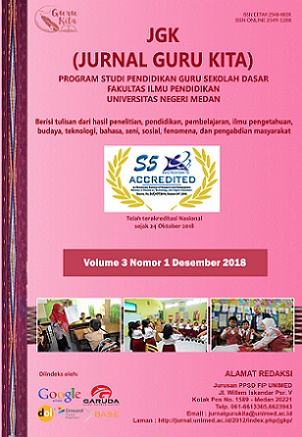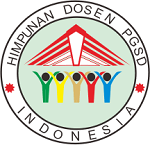EFEKTIFITAS PENGGUNAAN INTERACTIVE EDUCATIONAL MULTIMEDIA LEARNING BERBASIS TEORI KOGNITIF TERHADAP DYSLEXIC STUDENT DI SEKOLAH DASAR
DOI:
https://doi.org/10.24114/jgk.v3i4.15078Abstract
Abstract: Effectiveness of the Use of Interactive Interactive Multimedia Learning Based on Cognitive Theory of Dyslexia Students in Primary Schools. This type of research is research and development with quantitative and qualitative descriptive methods. The research aims to analyze the development of interactive educational multimedia learning in terms of cognitive theory in dyslexic students in elementary schools in Medan Denai district. Analysis of the data in this research will be distinguished above, interactive data validation data analysis through two stages namely descriptive qualitative and quantitative analysis. The percentage of display aspects given by the validator is 89.60%. For operational aspects, the percentage score data is 95.33% and the validator interaction aspect gives a percentage score of 93.53%. Based on these data, the learning media developed can be categorized as very good and feasible to be used as supporting analysis.Keywords: Multimedia learning, cognitive theory, dyslexic studentAbstrak: Efektifitas Penggunaan Interactive Educational Multimedia Learning Berbasis Teori Kognitif Terhadap Dyslexic Student di Sekolah Dasar. Jenis penelitian ini adalah penelitian pengembangan (Research and Development) dengan metode deskriptif kuantitaif dan kualitatif. Pelaksanaan penelitian bertujuan untuk menganalisis pengembangan interactive educational multimedia learning ditinjau dari teori kognitif pada dyslexic student di sekolah dasar kecamatan Medan Denai. Analisis data dalam penelitan ini akan dibedakan atas, analisis data validasi media interaktif melalui dua tahap yakni analisis deskriptif kualitatif dan kuantitatif.skor persentase aspek tampilan yang diberikan validator adalah 89,60%. Untuk aspek operasional didapat data skor persentase 95,33% dan aspek interaksi validator memberikan skor persentase sebesar 93,53%. Berdasarkan data tersebut maka media pembelajaran yang dikembangkan dapat dikategorikan sangat baik dan layak untuk digunakan sebagai pendukung analisis.Kata Kunci: Multimedia learning, teori kognitif, dyslexic studentDownloads
Published
2019-09-20
How to Cite
Sinaga, R., & Tanjung, D. S. (2019). EFEKTIFITAS PENGGUNAAN INTERACTIVE EDUCATIONAL MULTIMEDIA LEARNING BERBASIS TEORI KOGNITIF TERHADAP DYSLEXIC STUDENT DI SEKOLAH DASAR. JGK (Jurnal Guru Kita), 3(4), 338–341. https://doi.org/10.24114/jgk.v3i4.15078
Issue
Section
Articles
License
Authors published with the JGK (Jurnal Guru Kita) agree to the following terms:
- Authors retain copyright and grant the journal the right of first publication with the work simultaneously licensed under a Creative Commons Attribution License (CC BY-SA 4.0) that allows others to share the work with an acknowledgment of the work's authorship and initial publication in this journal.
- Authors are able to enter into separate, additional contractual arrangements for the non-exclusive distribution of the journal's published version of the work (e.g., post it to an institutional repository or publish it in a book), with an acknowledgment of its initial publication in this journal.
- Authors are permitted and encouraged to post their work online (e.g., in institutional repositories or on their website) prior to and during the submission process, as it can lead to productive exchanges, as well as earlier and greater citation of published work. (See The Effect of Open Access)













